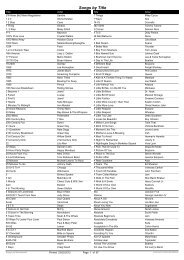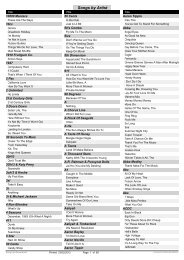Roderick W Rogers - members.westnet.com.au - Westnet
Roderick W Rogers - members.westnet.com.au - Westnet
Roderick W Rogers - members.westnet.com.au - Westnet
You also want an ePaper? Increase the reach of your titles
YUMPU automatically turns print PDFs into web optimized ePapers that Google loves.
Lichens of Subtropical Queensland R.W.<strong>Rogers</strong><br />
surface can be significant - always note whether they <strong>com</strong>e right to the lobe margins or<br />
leave a distinct bare zone around the edge.<br />
Cyphellae and pseudocyphellae are pores occur in both upper and lower surfaces, more<br />
<strong>com</strong>monly on the lower surface. When these pores have a well-developed margin with a<br />
concave pore behind the lower cortex the structures are cyphellae. If the pore is formed<br />
simply by a thinning of the lower cortex or by the development of deep fissures through<br />
the upper cortex while the lobe is young these are called pseudocyphellae. When<br />
pseudocyphellae occur in the lower cortex they are usually plugged with hyphae from the<br />
medulla, although they may not be the same colour as medullary hyphae. Take care not to<br />
confuse either the cracking that <strong>com</strong>es with age in the upper cortex or the fine, regular,<br />
reticulate cracking present in the upper cortex of some species with pseudocyphellae.<br />
Cilia are hair like structures that occur on the margin of lobes and also sometimes on<br />
apothecia, arsing from the line where the upper and lower cortex meet. Care must be taken<br />
not to confuse cilia with rhizines that protrude from the lower surface. In a few genera cilia<br />
have a distinct swollen bulb at their base: these are bulbate cilia.<br />
Dactyls are finger like structures that may be simple or branched, they my resemble isidia<br />
but that do not detach easily from the thallus. Dactyls may be<strong>com</strong>e sorediate.<br />
Lichen chemicals<br />
Most shrubby and leafy lichens produce large quantities of chemicals that are deposited<br />
around the hyphae. In most cases these chemicals are not water-soluble. The role of the<br />
<strong>com</strong>pounds varies. Some are apparently to do with management of the light regime, some<br />
have anti-biotic properties, and some may be anti-herbivore <strong>com</strong>pounds. The metabolic<br />
pathways that produce these chemicals are genetically based, which makes the chemicals<br />
themselves taxonomically useful.<br />
The chemicals are deposited specifically in some tissues. A few chemicals are found only<br />
in the cortex, and these may influence the colour of the upper surface. Most chemicals are<br />
found in the medulla, and a few of these do colour the medulla. Melanin derived pigments<br />
are found mostly in the lower cortex, but do occur in the upper cortex of some genera.<br />
Apothecial tissues may also accumulate specific chemicals.<br />
Fortunately, it has been discovered that some of the chemicals show colour reactions with<br />
a variety of reagents. This makes chemical tests easy, and, since clear-cut taxonomic<br />
characters are few on a lichen, chemical tests are very useful indeed. How to carry out<br />
these tests is discussed below.<br />
8





